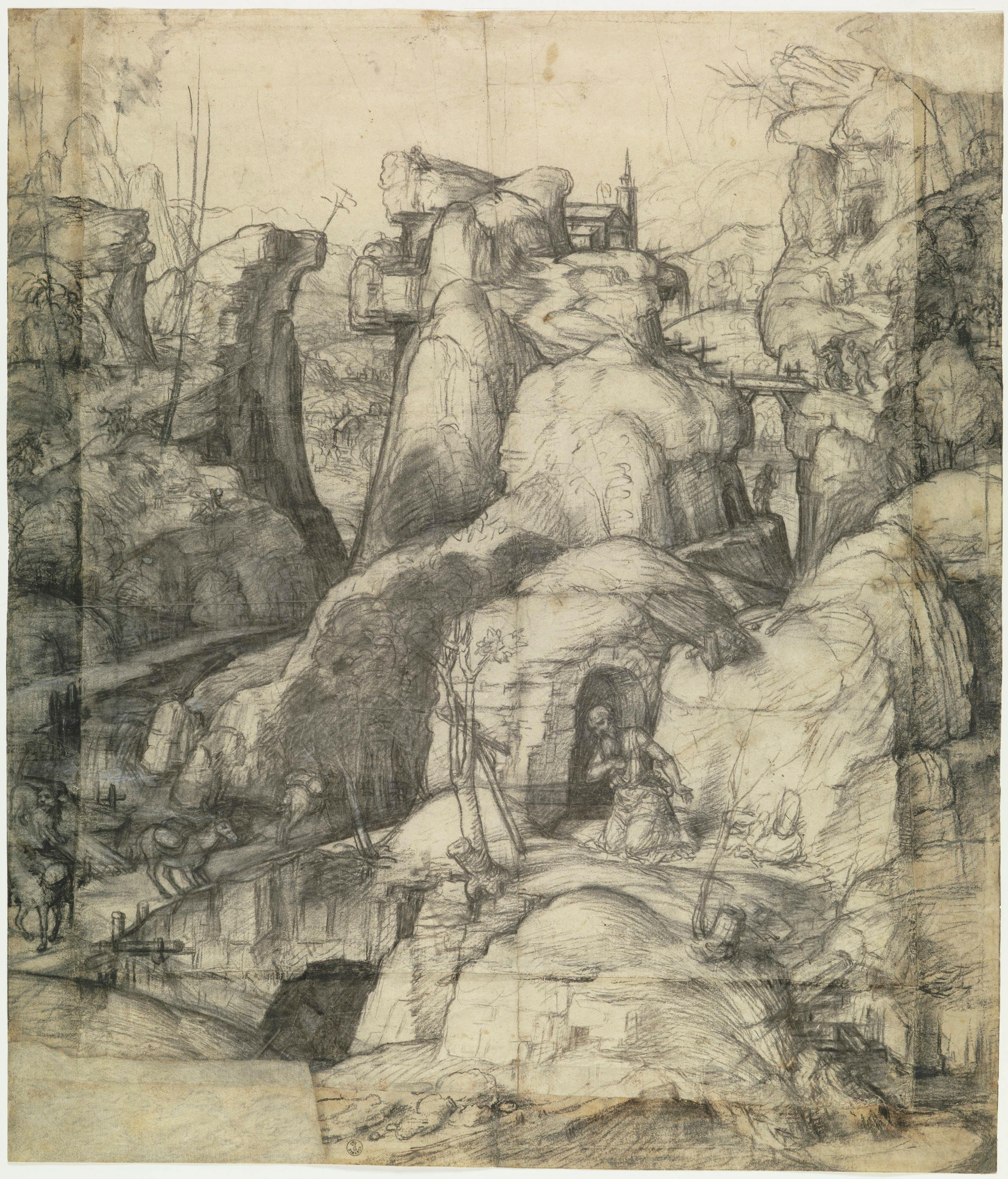Saint Jerome in Penitence in a rocky landscape
Piero di Cosimo (Florence 1461/1462 – 1521)
This large drawing by Piero di Cosimo is in fact a composite of multiple pieces of paper. The need for such a large surface suggests that the work was a cartoon created in preparation for a painting. The presence of stylus marks tracing the charcoal lines in certain parts of the drawing also indicates that the design was at least partially transferred onto another support, confirming its function as a preparatory study. However, the final work is not known, and in fact even the painting in the Horne Collection which explores a similar subject and was once thought to be linked to the sketch in the Uffizi, is profoundly different.
Critics have often highlighted the possible connections with the Nordic tradition of this representation of Saint Jerome immersed in a broad natural setting, drawing parallels with the Flemish painter Joachim Patinier or indeed Hans Memling, who painted the so-called “Flemish-style” landscapes which were well received by Florentine art buyers in the closing decades of the fifteenth century. On close inspection, numerous caves can be identified in the background which, like the cave of Saint Jerome, are inhabited by monks and appear to be man-made; these characteristics suggest that the work may have been inspired by the most ancient medieval depictions of Thebaid.
